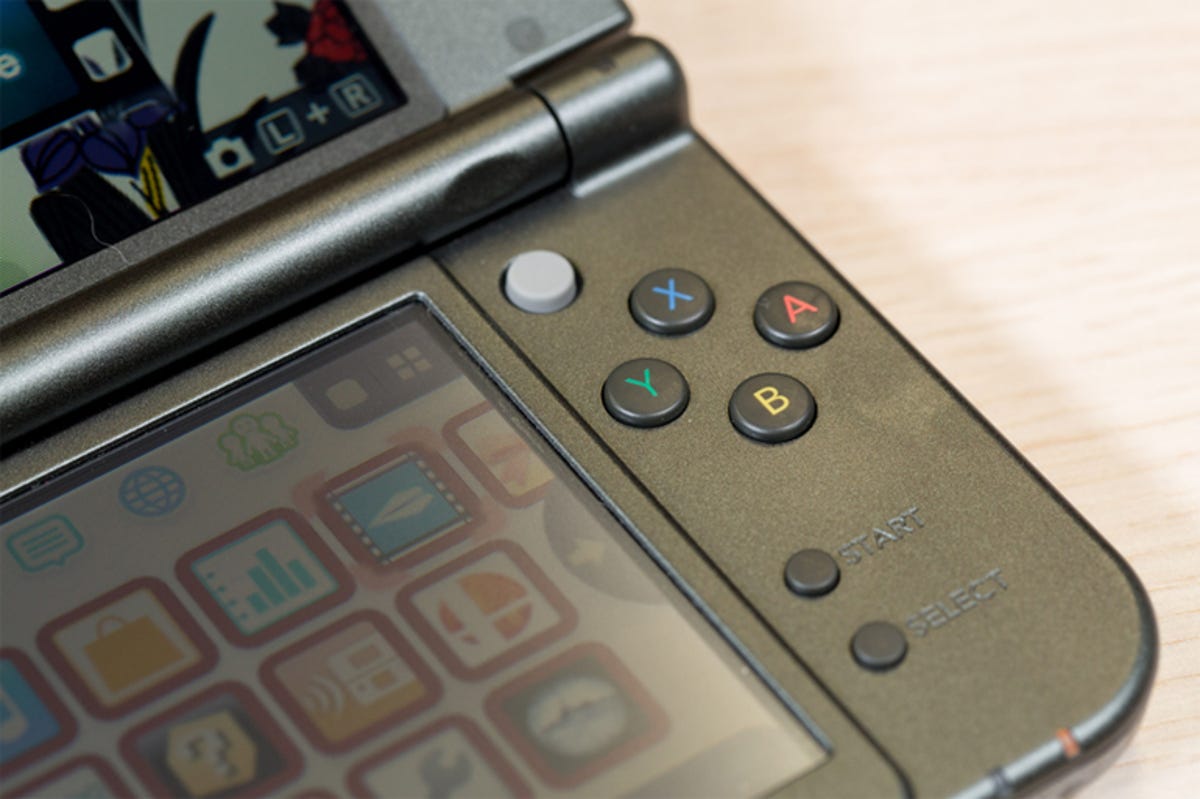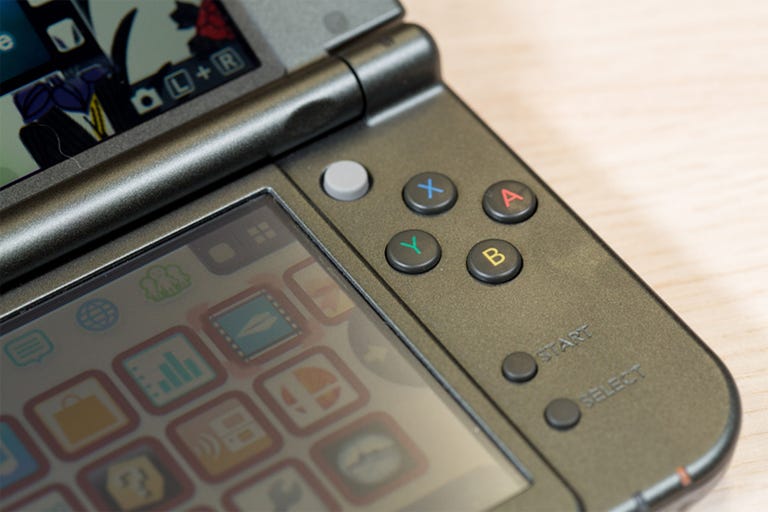 Why You Can Trust CNET
Why You Can Trust CNET New Nintendo 3DS XL review: The New Nintendo 3DS XL almost nails it
A few head-scratching design choices prevent us from falling for the New 3DS XL, but this is still the best Nintendo portable to get.
We don't claim to understand the mysterious ways in which Nintendo operates, we just marvel at the madness and give you a practical take on how it all shakes out.
And right on cue, the latest 3DS hardware refresh has us scratching our heads once again. We love the new screen and think the head-tracking feature is a game-changer for the platform, but the decision to go to microSD and the data transfer process have caused us to simultaneously slap our foreheads in befuddlement. Oh right, and the new 3DS XL doesn't come with a charger.
The Good
The Bad
The Bottom Line
That was not a typo. You read it correctly. There is no way to charge the new 3DS XL out of the box. You either have to buy one from Nintendo or get a bootleg version on Amazon. What's worse is an official charger is around $10, which is probably what every charger in the world costs, so the reason to just not pack it inside the box escapes us.
Nintendo's justification for not including it in the box is that it's entirely likely you might have an existing charger that works with the new 3DS XL already in your possession. To be fair, the connection type is a legacy adapter that's worked with previous 3DS models. It sounds counter-intuitive to deny 3DS newcomers a charger, but that's Nintendo's thinking.
Editors' Note, February 13, 2015: CNET Australia originally reviewed the New 3DS XL back in November 2014, but we've updated this review and its score to reflect some new findings we've uncovered after a few months with the system.
How the New 3DS XL got here
Bringing 3D to the masses has been fraught with issues. The biggest of these -- amidst horrible one-size-fits-all glasses and the premium pricing slapped onto 3D products -- is the headaches it can induce: move your head slightly off-axis while viewing a 3D TV or a 3D smartphone and your eyes strain to keep up with the shifting images in front of them.
The 3DS, released in 2010, was no exception; I personally never played the thing with the 3D switched on and, anecdotally, no one I have spoken to about it did, either. At best, I'd push the slider up every now and again to see what the 3D on a particular game looked like, before pushing it back down so I could play without causing my eyes to feel like they were peering into the furnaces of the underworld.
Using the same head-tracking technology as the New 3DS, the New 3DS XL follows the direction, distance and angle of your head to keep the 3D smooth and stable. This means that as you make subtle movements while playing your eyes don't have to constantly readjust to the shifting 3D. It moves when you move.

Obviously this has its limitations; if you tilt the screen beyond a certain angle, the 3D misaligns; but the field of view is more than adequate in all directions.
How this translates is quite wonderful. For someone who found the 3DS's 3D unbearable, I have been able to play almost all the way through The Legend of Zelda: A Link Between Worlds with the 3D on the New 3DS XL at its highest level for the entire duration of the game, and it looks utterly superb. It's so smooth and comfortable I forget at times that it's not how I usually play. And, of course, the larger screen of the XL makes for top visibility, particularly on games that have a lot of action happening in a small space.
For the first time, 3D is actually desirable, rather than a poorly implemented add-on designed to cash in on a craze that never quite managed to catch on -- and it gives the 3DS, with its lower-level graphics quality, a hardware hook in the handheld market.
Who's got the button?
Physically, the device had a bit of an overhaul too. Some of the changes are actually quite subtle, but they all have a largely positive impact on the user experience.
The New 3DS XL doesn't feel too different from the first XL in the hand. It has the same size 4.88-inch and 4.1-inch dual screens as the original, but it is slightly larger, with dimensions of 160x93.5x21.5mm and tipping the scales at 329 grams.
The D-Pad, thumbstick, right and left triggers, home button and face buttons (which are now colour-coded) are all more or less in the same positions. But the power, start and select buttons have all moved -- the power button to the front of the device and start and select to below the face buttons. This makes them more reachable and less prone to an accidental press.
The stylus and game card slot have also moved, now at the front of the device, rather than the back. This is to make room for two new buttons tucked inside the shoulder triggers: ZL and ZR. The functions of these will probably vary according to the game, but they're not as uncomfortable to reach as they look; even with smaller hands, it's just a small shift inwards.
The function of a new thumbstick (of sorts) will vary too: the rubber C-stick on the front of the device, next to the face buttons. This takes a little getting used to, since it doesn't function like portable console thumbsticks usually do: it's fixed in place and quite rigid, and requires just a small nudge to click over. On the homescreen, it can be used to move between software programs, and it's actually quite sensitive; this disparity between the button's physical rigidity and its sensitivity takes some getting used to, but there's definitely some potential. In Super Smash Bros 3DS , for instance, you can hold it to charge your super attack.
One change is a little on the vexing side: the SD card. It has been changed to micro SD with a maximum capacity of 32GB, although that's not the vexing part. The New 3DS XL and the New 3DS no longer have a slot for the card. Instead, you have to remove the entire back plate from the device using a screwdriver in order to replace the card -- which is desirable if you prefer to buy your games as downloads rather than cards, since by default the console comes with a 4GB micro SD card.
This is a fiddly process, and one that doesn't seem to make a huge deal of sense -- a slot could have been easily fitted along one of the sides. For the New 3DS XL, however, Nintendo seems to be trying to keep the sides of the device clear -- in the case of the micro SD card, to its detriment.
Software
Nintendo has tinkered with a few bits and pieces under the machine's hood, making a few upgrades that the player won't necessarily notice, but that will improve the overall experience. These include a faster CPU, automatic brightness in response to environmental lighting, video playback in the browser, wireless file transfer between the 3DS console and a PC, and a built-in NFC chip for compatibility with Amiibos.
The OS has had an overhaul, too, including the ability to change wallpapers and a more compact, easily navigable layout -- although it is worth noting that this OS update is also compatible with the 3DS, and has been available since early October.
For all this, though, Nintendo still hasn't quite managed to address one of the biggest user issues with the 3DS: battery life. For something that is meant to be portable, a maximum of 7 hours of battery life seems slim. Although, it is better on the New 3DS XL than on the New 3DS, which only has a maximum of 6 hours, and the old 3DS XL, which has a battery life of 6.5 hours.
If you're travelling with the New 3DS XL, we recommend packing an external battery pack.
Conclusion
Each user's mileage is going to vary when it comes to the comfort or desirability of 3D gaming. That said, the upgrades to the 3D capabilities in the New 3DS XL alone make it worth either upgrading or as a purchase for those dipping their toes into the world of the 3DS for the first time. And, although it may not be as customisable physically, the New 3DS XL also has clear performance advantages over the New 3DS in the longer battery life and higher visibility.
The New 3DS XL is now available in most major markets.




